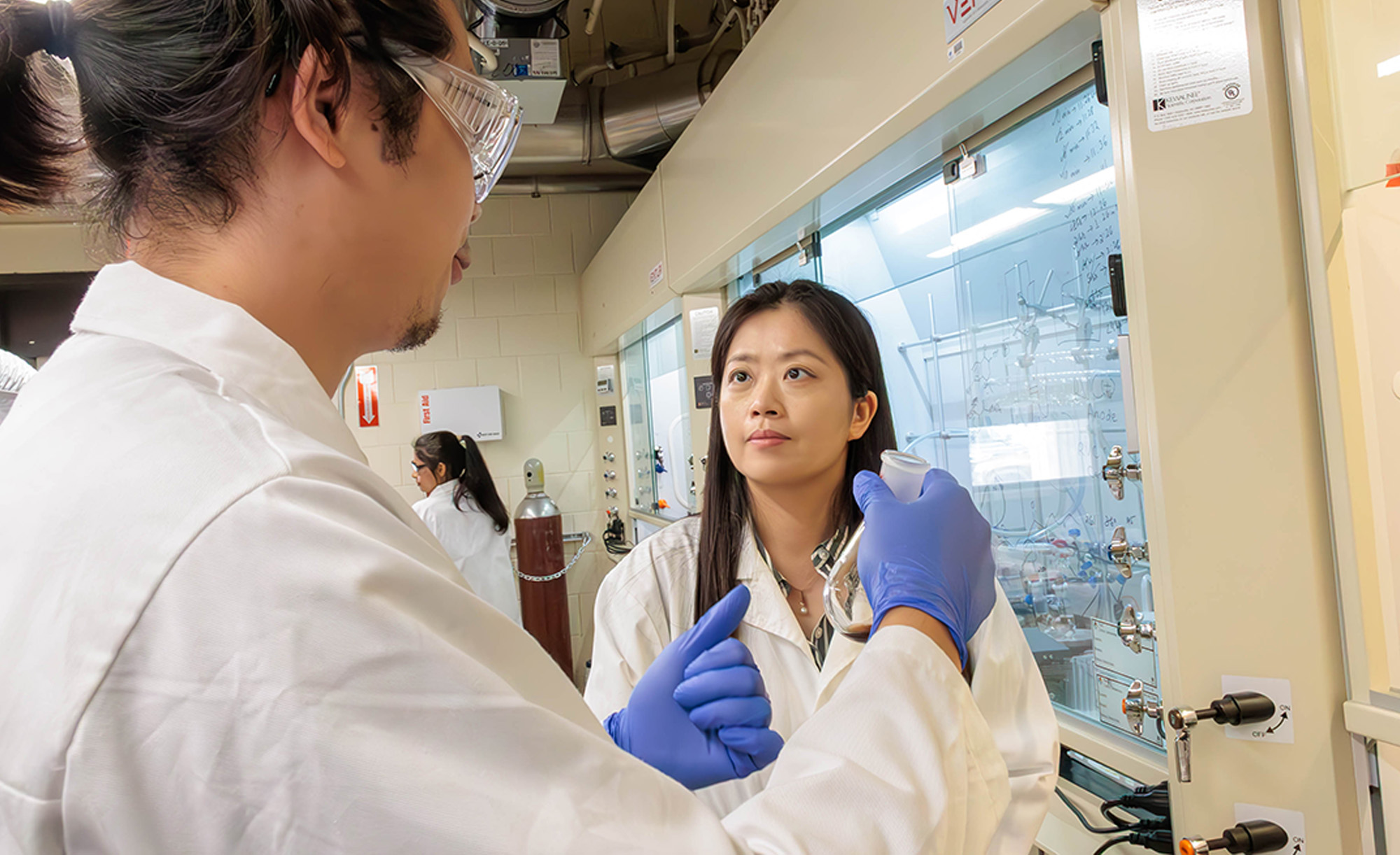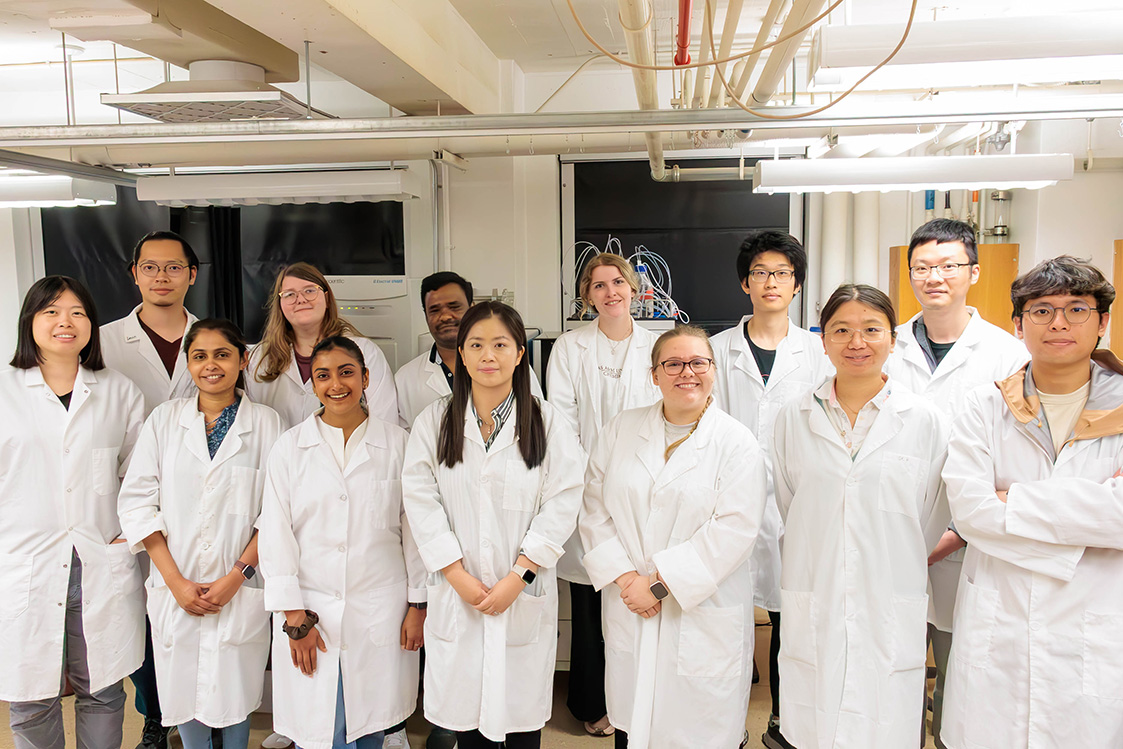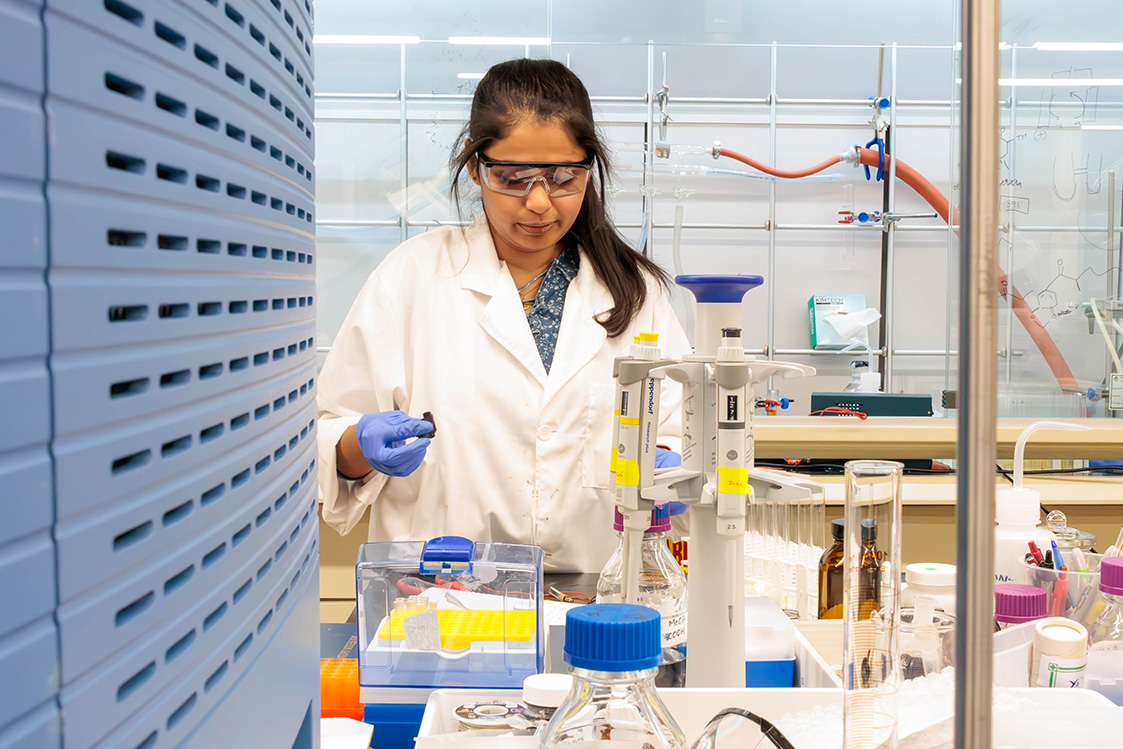
Chemical reactions can unfold much faster when they take place in microdroplets — droplets so small they are undetected by the naked eye. When scientists combine this reaction with a tool called mass spectrometry, they can get incredibly detailed information about the molecules involved. At the center of this breakthrough is Dr. Xin Yan and her research team at Texas A&M University, who are advancing mass spectrometry techniques that help detect disease, understand how drugs work and make chemistry more environmentally friendly.
Since joining the Department of Chemistry in 2018, Yan has built more than just a research group — she has ushered in a new era of progress in analytical chemistry. By developing novel mass spectrometry methods, the Yan Research Group not only advances scientific boundaries but also prepares a generation of student researchers to tackle some of the most urgent challenges in biomedical science today.
Pushing The Limits Of Detection
“Mass spectrometry is both a tool and a platform in our lab,” Yan said. “We develop new methods that push the boundaries of what can be detected or understood.”
Mass spectrometry is a powerful method scientists use to identify and study molecules. It works by turning molecules into charged particles, called ions, and then separating them based on their weight and charge. This process is incredibly precise, so researchers can see exactly how molecules are structured and how they behave.
Because of its accuracy, mass spectrometry has become essential in many areas. It helps doctors diagnose diseases, supports scientists in developing new medications and even aids in solving crime or studying pollution. Any field that relies on understanding how molecules work can benefit from this technology.

In the Yan Research Group, mass spectrometry is more than just a tool — it is the backbone of their scientific approach. It serves both as a method for analyzing molecular structures and as a platform for developing entirely new techniques.
“These innovations enable us to study biomedical systems and chemical reactions with a level of detail that simply wasn’t possible before,” Yan said. “That translates directly to faster disease diagnosis, better understanding of drug mechanisms and more efficient chemical synthesis.”
The team studies lipids, which are fats that play important roles in how our bodies work and how diseases develop. They use special “mass tags” they invented to help analyze these lipid molecules more easily, which is important for understanding conditions like Alzheimer’s and cancer. They are also creating new techniques that speed up chemical reactions inside tiny droplets, so scientists can quickly study complicated processes.
“Overall, our work spans both fundamental tool development and application driven research with mass spectrometry at the core of everything we do,” Yan said.
Next-Generation Researchers At Work
The Yan Research Group includes 14 researchers, among them Ph.D. candidate Annesha Sengupta, who works at the forefront of these innovations.
“My role involves designing and executing experiments, analyzing data, maintaining instruments, and mentoring an undergraduate student,” Sengupta said. “I’ve also contributed to an industrial collaboration with PepsiCo on flavor analysis using mass spectrometry.”
Dr. Yan emphasizes that students in her lab gain valuable experience with advanced instrumentation and practical applications. This hands-on training equips them with the skills and knowledge necessary to pursue competitive careers in academia, industry, or government laboratories.
“Being trusted with the independence to design and direct my own projects, while knowing I could always turn to Dr. Yan for guidance when needed, created a supportive environment where I could truly grow,” Sengupta said. “This balance taught me to think critically, tackle challenges with confidence, and believe in my ability to lead scientific work. It has been both empowering and reassuring and has helped me see a clearer path forward in my career.”
The impact of this work goes far beyond Yan’s lab. By creating new mass spectrometry tools, her research helps scientists from many different fields at Texas A&M — like chemistry, biology, engineering and environmental science. Thanks to these advanced techniques, researchers across campus can study complicated samples more accurately and make new discoveries together.
“This program moves science forward and builds connections across campus and helps prepare the next generation of researchers,” Yan said.
The science behind this research might be complicated, but its benefits are clear. The team’s work helps improve medical testing, develop new medicines, and study chemicals in the environment. For example, their methods for analyzing lipids can spot signs of disease, making diagnoses more accurate. They also study how proteins and drugs interact, which could lead to more precise treatments.
“These innovations reflect the lab’s strength across analytical chemistry, chemical biology, instrumentation, organic synthesis, and green chemistry, driving meaningful progress in understanding disease, developing advanced tools, and promoting sustainable approaches in science,” Sengupta said.
But without steady funding, the lab could lose a lot of the progress it has made. Important data might be lost, valuable samples could be ruined, and the research could come to a stop.
Why Funding Matters

“If our research lost funding, the impact would be felt on several levels,” Yan said. “The university would lose a key interdisciplinary resource. Students would lose opportunities for advanced training. And society would lose progress in areas like public health, sustainability and molecular discovery."
Fortunately, support from the university — especially the College of Arts and Sciences — has helped the Yan Lab expand quickly. In the Department of Chemistry alone, Yan works closely with other mass spectrometry experts, including Dr. David Russell, Dr. Art Laganowsky, Dr. Emile Schweikert and Dr. Lane Baker.
“Funding isn’t just about maintaining a lab,” Yan said. “It’s about keeping an engine of innovation, education and real-world impact running.”
Right now, the lab is making their tools better and teaching students new skills. In the future, Yan hopes to grow her team into a center for mass spectrometry research that is known across the country and around the world.
“Ultimately, it’s about combining technical innovation, collaboration and firsthand training to build a program that drives discovery and prepares the next generation of scientists,” Yan said.
Research At Texas A&M
Texas A&M University is one of the world’s leading research institutions, dedicated to advancing knowledge and serving the public good. As a land-grant, sea-grant and space-grant university, Texas A&M engages in research that spans multiple disciplines and addresses global challenges. It is the first research institution in Texas to top $1 billion in annual research expenditures (fiscal year 2021). To learn more, visit research.tamu.edu
